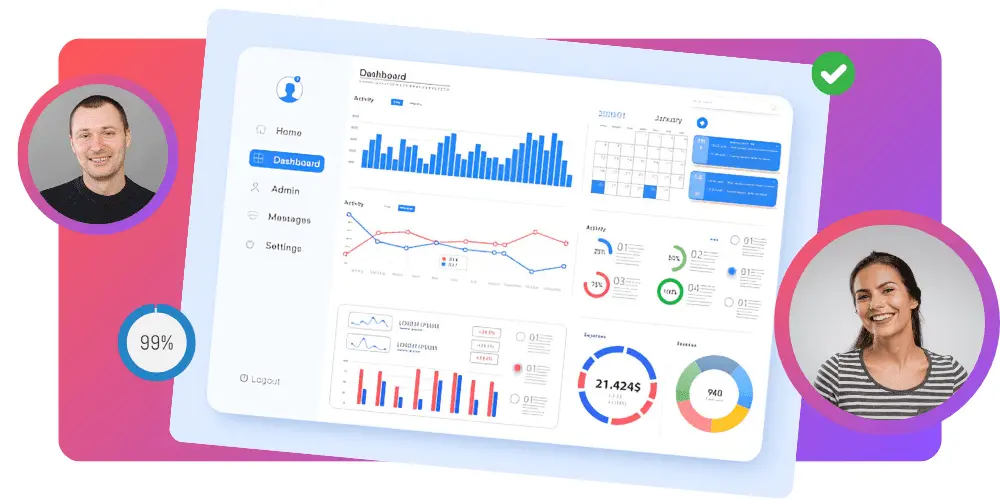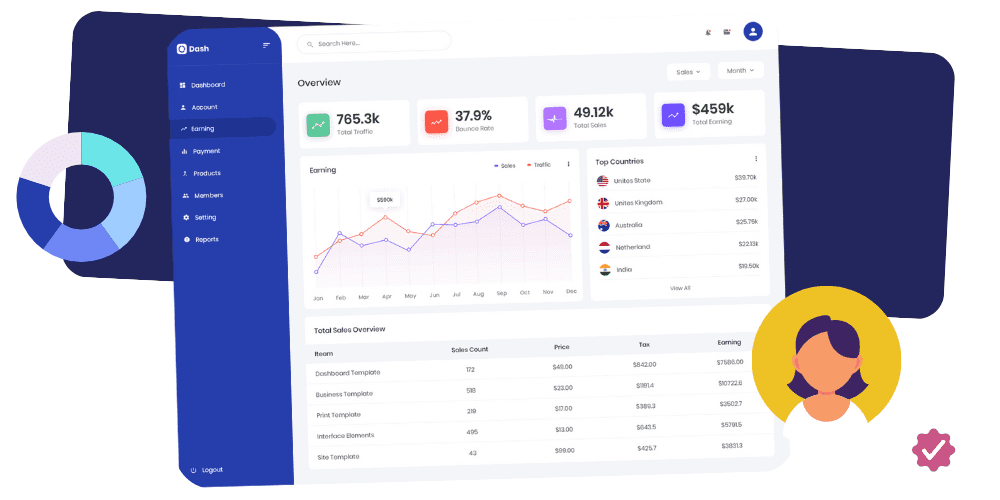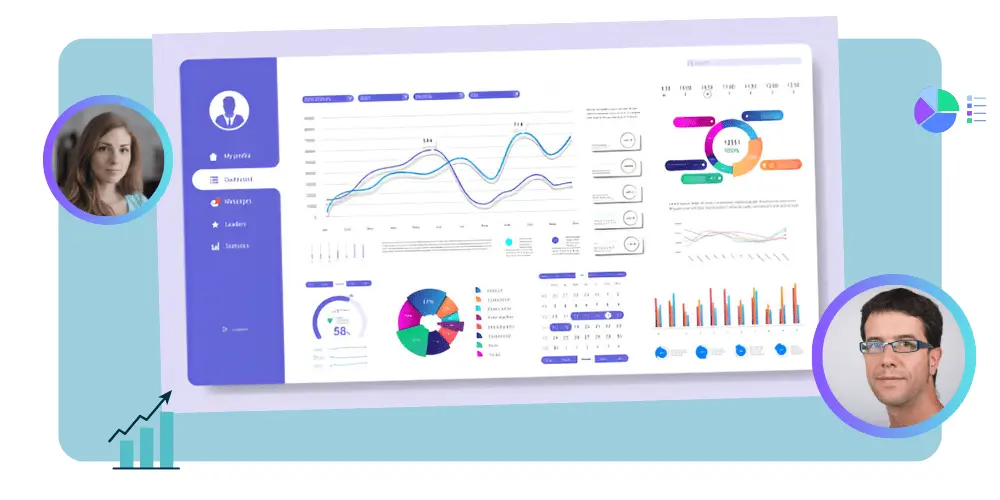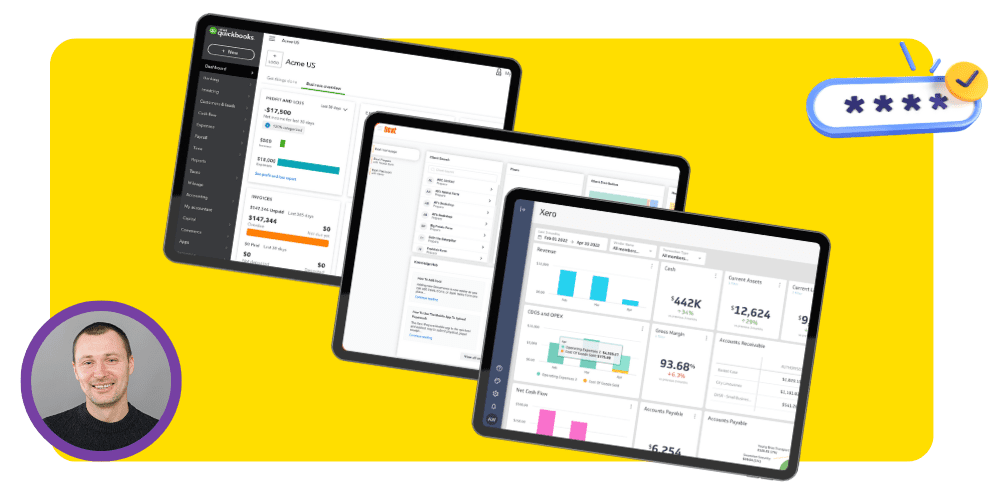HMRC CEST Tool
Declaring a contractor’s actual employment status for tax purposes has always been an issue for HMRC. For this very purpose, HMRC launched ‘Check Employment Status for Tax’ (CEST) in March 2017. Our specialist contractor accountants have worked hard to curate this guide to help you understand what this tool is and how to use it best.
What is CEST?
CEST which stands for Check Employment Status was released to help tax authorities determine whether a contractor should be declared either as a standard employee or as self-employed for tax purposes. This initiative attracted significant criticism due to its incapacity to address more challenging employment statuses or extremely specific situations.
In response, HMRC has now launched an updated version of CEST to help determine the exact status of contractors and solve more challenging employment statuses, in line with the IR-35 legislation.
If you are planning to work as a contractor in the UK, you need to have basic knowledge about how tax can affect your business. Speak to a contractor accountant before you begin.
Related: Working as a contractor brings about numerous responsibilities. Read everything you need to know about working as a contractor.
“Tip: Off-payroll working rules are changing for private workers, plan ahead for this change to reduce your risk as much as you can.”
What is IR-35?
IR-35 measures the risk of a contractor being considered as an employee instead of a contractor for tax purposes due to the nature of their work and the conditions of their working arrangement.
If the contractor is at high risk of coming under the IR-35 legislation, then they have to pay PAYE and National Insurance Contributions deductions (NIC), like regular employees. This can be backdated which can create further issues.
Related: Read more about IR-35 legislation in detail.
After consulting from relevant stakeholders and careful testing, HMRC fulfilled its commitment to introduce a modified version of the CEST tool before the IR-35 regime takes over the private sector.

Can I use the CEST tool to help with IR-35?
The tool was created to help employers determine the employment status of an individual when hiring, this is especially important now due to the off-payroll rules being planned for April 2020. You should use this tool when:
- You are going to employ a worker directly
- You are planning to change a work agreement with an individual
- The hired individual disagrees with their employment status
- You are an agency that provides workers to a public authority
- You, as a contractor working through an intermediary, accepts a new contract
How do I use the CEST tool?
The first step before using the CEST tool is to make sure you have the required information to hand, the information you should have is as follows:
- Contact details
- The responsibilities of the individual being hired
- The decision-maker for the work required to be done
- The decision-maker for how and where the work is done
- The method of payment to the worker
- Any benefits or reimbursements that are offered with the work
Once you have the details you should be in a good enough position to use the tool above to determine your worker’s employment status. Alternatively, our contractor accountants can help guide you through the process.
Related: Choosing between an umbrella company or a limited company when working as a contractor can be confusing.
What does the new update to CEST bring about?
The revamped version of the CEST tool brings about changes regarding financial risk, personal service and worker’s contracts. About 30 questions have either been updated or added to the tool after testing it with various stakeholders and key industry bodies. The update aims to increase the accuracy of the results regarding whether the employee falls under the off-payroll working rules or not.
Questions revolve around the worker’s responsibilities, the right to send in a substitute if unavailable, the person who bears the cost of the worker’s equipment, financial risk, the level of worker’s involvement, and whether that worker is providing service elsewhere. After answering all of the questions, the CEST tool will then decide whether IR-35 rules apply to the employment status or not. Testing carried out by HMRC on actual cases using the CEST tool in 2018 showed that 92% of the time, the results that the CEST tool generated were similar to the actual case results by the first-tier tribunal.
What are the concerns?
Experts argue that despite the revamping of the CEST tool, it still cannot be considered reliable. The reason might be because it doesn’t take some factors into account, say Mutuality of Obligation (MoO), that has been a decisive factor in many IR-35 related cases previously. MoO demands that the employer should assign a particular job to the worker, and in return, the worker should accept and provide full services to the employer. The CEST tool still assumes MoO to be part of every contract, thus raising questions on its reliability.
Considering the criticism, HMRC managed to defend its update by stating that the changes are the result of the feedback provided by over 300 stakeholders to reduce the number of errors and introduce higher levels of reliability and accuracy.
Though the CEST tool has been successful in providing accurate results in more straightforward cases, it still fails to deliver definite answers in more complicated and exceptional employment circumstances, for instance, employment status for contractors from the entertainment industry. It is, therefore, advisable to speak to an expert contractor accountant or get an IR-35 contract review where the case might be more complicated.
What should organizations ensure?
Expecting accurate and reliable results from the CEST tool can only be possible if you enter the correct data. It is advisable for companies that have so many contractors on board to conduct an internal audit of their employees before using this tool.
You must keep in mind that HMRC will only decide according to the results provided by the CEST tool, given that the data provided is correct and the tool is used according to the mentioned guidelines.

CEST tool- What is the purpose?
By using the CEST tool, you can determine:
- Whether HMRC will treat you as employed or self-employed for tax purposes if you have or are hoping to get a work contract.
- The employment status of the worker with whom you engage or represent your business.
You must ensure that there is a contractual agreement in place to check the nature of the engagement (employed or self-employed). You don’t need to worry about data mishandling or fraud, as this tool is anonymous and does not store any information you provide.
When to use the CEST tool?
You can use the CEST tool to check employment status for tax purposes in the following situations:
- When you hire someone
- When you and your intermediary welcome a new engagement with a client
- When the terms of a contract or service agreement are changed
- When you have an agency that supplies workers who provide services to a public authority via an intermediary
- When there is a disagreement between you and your worker on a determination you provide
- When you hire workers as a public authority, and those workers provide services via an intermediary
How can an accountant help?
The conditions set by HMRC to determine the actual employment status of a contractor are somewhat challenging to understand. To understand the true nature of these issues, one must seek or hire an expert to get fruitful guidance. In this case, businesses might require the assistance of professional accountants to help them guide on IR-35.
Specialist contractor accountants have the relevant expertise and experience needed to help business clients discover their actual employment status. Accountants can also help you conduct an internal audit of your company’s workforce to provide you with new ideas and solutions.

As off-payroll rules become applicable to private businesses in 2020, businesses will require the expertise of expert lawyers and accountants to get their taxes done right. Especially large firms who have employed numerous contractors and still plan to do so.
Clear House Accountants are smart Accountants in London who specialise in working with contractors, our smart solutions make sure you are prepared for changes in the most effective way possible.









































































